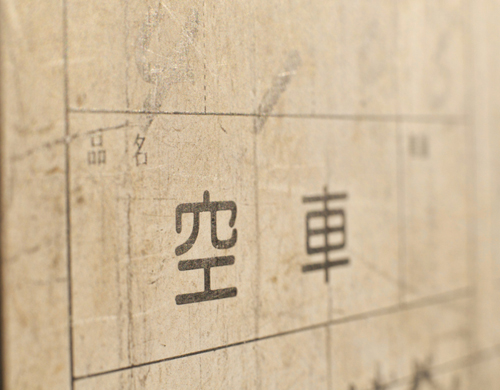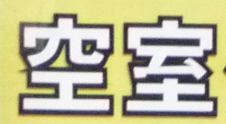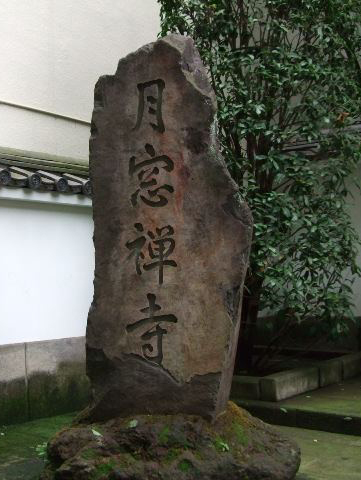116. The "Hole" Radical: 穴
The (w)hole truth about 穴, the "hole" radical, is that there's very little to say about this five-stroke radical! Popping up in just nine Joyo kanji, it stays consistent in shape, position, yomi, and meaning across the various characters.
The Radical Name in Japanese and English
Just as we can read the autonomous kanji 穴 (hole) with the kun-yomi of あな, we can refer to this radical as あな. However, it's perpetually in the "crown" position, so we can always use the more specific term あなかんむり. (If I've lost you with this terminology, go to Radical Terms and then to the "Radical Names" section, reading about "Position 3.")
Although some sources refer to the 穴 radical in English as the "cave" radical, that makes little sense to me. The 穴 kanji primarily means "hole," whereas 洞 is the main way to represent "cave." Therefore, I wholeheartedly support "hole" as the name of the 穴 radical.
There are two more good reasons for this decision:
• The etymologies of many kanji with this radical involve not a cave but a hole dug in the ground.
• If we have a "hole" crown, then we have a hole in the head (or something like that)!

Photo Credit: Christopher Acheson
Our radical is the very first part of this sign. One reads 空車 as くうしゃ. The writing refers to an empty (空) car (車), but that signifies different things in various contexts. In this case it refers to an empty freight train car. At other times it means that a parking lot has available spaces. The word could also translate as "empty taxi," which is to say "available taxis."
Variants of 穴
Nelson presents two variant forms for 穴, but the alterations to the shape are so minor that I would hardly count them as variants. Just to fill you in (that's a hole pun, in case you missed it!), his variant shapes come very close to these:

That is, the "legs" (儿) below the "roof" (宀) can acquire a 八 shape or can straighten out a bit, but these are more font variations than anything.
Most characters in the 穴 category have asymmetrically curly "legs" (儿), as in the 空車 photo above. However in the 穴 kanji itself, the legs look straight, stiff, and symmetrical.
The Etymology of 穴
As long as we're examining the shape of 穴, let's consider the etymology of the autonomous 穴 kanji:
穴 (849: hole; cave)
Originally, says Henshall, 穴 represented a "space being opened up (in the ground) and covered," which was a primitive method of forming a dwelling. Although the 八 means "to disperse" or "away," in this case it's "to open up," he says. (Some scholars feel that it acts phonetically to express "dig.") Meanwhile, the 宀 means "roof; cover." With 八 as "to open up" and 宀 as "cover," we have a space that's opened up and then covered. This character later broadened to mean "hole" in general.
Photo Credit: Eve Kushner
My acupuncturist is a kindly but sadistic woman with a "no pain, no gain" approach. (This could be why I haven't visited her in ages.) She came from China decades ago, and there's hanzi everywhere in her herb-scented office. For me, the joy of seeing those characters partly compensated for the physical pain she inflicted. Lying on the table, I would stare at this man's two halves and at the Simplified hanzi above his head:
针灸穴位挂图 needle + moxibustion + hole + position + hanging + chart
Here's what this sign would say if we changed all the hanzi to kanji:
針灸穴位掛図
The breakdown would be the same. By the way, 灸 is non-Joyo.
I mention all this because if you're thinking about 穴 and holes, acupuncture is as relevant as it gets! However, the 穴位 here really means "(acupuncture) point," rather than the hole a needle creates.
While we're discussing acupuncture, I'll share one more thing. Back when I could barely speak Japanese, I read that if you don't know the word for something, you should find a workaround, as opposed to resorting to English. That weekend I told my language partner about my latest acupuncture session. Not knowing 針治療 (はりちりょう: acupuncture), I said in Japanese that a woman had put many needles under my skin. Boy, was he confused!
The Hole in the Sky or Air (空)
Let's look at a few more 穴 kanji and their etymologies. Earlier we saw the following character:
空 (15: sky; air; empty)
You might wonder about the role of 穴 in this common kanji. Henshall says it combines 穴 (hole) with エ (to work upon). The latter component also serves phonetically to express "opening." Originally, he says, 空 meant "working on digging a hole that would then be covered with a roof to form a primitive dwelling." (Thus far this sounds like the etymology of 穴.) Because the roof was domed, people associated the idea of empty space in the dwelling with the central vaulted area. Eventually, the idea of that upper space extended to the "sky" itself.

Photo Credit: Lutlam
The double roof in this photo reminds me of something important. On seeing kanji such as 空, one could easily think that the radical is 宀 (radical 40: the "katakana u" radical) when in fact there's more to it. You need to see the whole hole!
This sign is about an 空室 (あきしつ: vacant or unoccupied room) for rent. The correct way to write this word would be 空き室, but one often sees compression in signs and ads.
Going to Extremes with 究 and 窮
Now, what's a hole doing in a kanji like 究?
究 (253: to study exhaustively)
You may know this character from 研究 (けんきゅう: research). Should we conclude that someone's research has holes in it?!
No, says Henshall, 究 combines 穴 (hole) with 九 (nine). In this context, the 九 means "bent elbow." Although the etymology of 究 is disputed, he says, many scholars feel that 究 originally referred to "thrusting the arm into a hole to 'ferret' something out," which is to say "going to 'extreme' lengths."
Henshall lists "extreme" as a secondary meaning of 究, and Halpern confirms that this kanji can mean "to reach the extreme."
Incidentally, another kanji with the 穴 radical has a similar meaning:
窮 (1152: to be in extremity)
The bottom part originally represented a "pregnant woman's body pulling against the backbone," says Henshall. That complicated bottom part acts phonetically here to express "extreme" while lending connotations of "discomfort." Our radical in 窮 literally means "primitive dwelling," so the entire character refers to "uncomfortable quarters in the extreme innermost part of a dwelling." Later, 窮 evolved to mean "to be in an extreme situation," "suffering," "constraint," and "extreme."
Photo Credit: Eve Kushner
A sign in Osaka breaks down this way:
大阪 (おおさか: Osaka)
市立 (しりつ: municipal, city)
環境 (かんきょう: environment)
科学 (かがく: science)
研究所 (けんきゅうしょ: research institute)
Because the sign includes 学 and 研究所, it's easy to assume that it pertains to a university, but instead the sign is for the Environmental Sciences Research Institute for the city of Osaka.
A Window onto the Window Kanji (窓)
Let's peer at the window kanji:
窓 (919: window)
It would make perfect sense for a window to have a hole in it, but that's not what's happening here. Henshall calls the etymology somewhat obscure, explaining that the shape used to be elaborate and quite different, involving a pictograph of a "window with a grill." The 穴 (hole) part came later.

Photo Credit: Izumi Kobayashi
A beautiful stone at a Tokyo temple bears the
temple name 月窓禅寺 (げっそうぜんじ).
Double Hole
I'll close the (w)hole discussion by looking at one more kanji:
窯 (1881: kiln; oven)
This character isn't common at all, but it plays a special role here because of this great word:
穴窯 (あながま: type of kiln made by digging a hole in the side of a hill) cave + kiln
As essay 1881 explains, the Japanese imported this kind of tunnel-shaped kiln from China via Korea in the fifth century. Despite the kiln's Chinese origins, the Japanese refer to it with a wonderful kun-kun combination that features four instances of the a sound. Ah!
And check out that repetition of the 穴 shape in 穴窯! It's a little hard to see the second one, squished at the top as it is. But the beauty is that this compound shows us just how large or small the 穴 component can be, and I think that merits a "Holy crap!"
